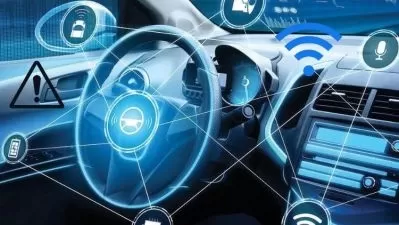ISO 21434 Automotive Cybersecurity Standards
Vocabs Tutorial
2:09:59
Description
ISO21434, TARA, Security Concept, Stakeholder Expectations, Security Specification
What You'll Learn?
- Participants in this ISO 21434 course will receive in-depth knowledge of the various requirements for automotive cyber security ISO 21434 standard.
- Students will grasp the relationship between threat and risk analysis, security concept, stakeholder expectations, security specification, verification etc
- Students shall understand these relationships through out the entire lifecycle of product development.
- The course consists of a multi-stage qualifying and practical approach taking into account industry implementation factors.
Who is this for?
More details
DescriptionNowadays, there is more connectivity than ever in vehicles, meaning more risks to car cybersecurity as a whole. From WiFi to Bluetooth, LTE, and USB, the number of connected interfaces in automobiles increases exponentially every year. But with increased connectivity comes higher security risks, which is why the automotive industry developed ISO 21434, a standard that promotes cybersecurity in road vehicle systems.
Although there are many benefits that come with driving a connected car (5G wireless connectivity to enable self-driving capabilities, advanced navigation systems, fewer road accidents being a few of them), the increasing amount of software in vehicles has also led to heightened cybersecurity concerns. Networked and semi-autonomous cars are more vulnerable to cyber attacks than their predecessors. As a result, manufacturers all over the world are looking to mitigate those vulnerabilities and reduce the likelihood of accidents and injuries they could cause.
ISO 21434 “Road vehicles - cybersecurity engineering†is an automotive industry standard developed by the International Standard of Organization (ISO) alongside the Society of Automotive Engineers (SAE). ISO 21434 focuses on the cybersecurity risks inherent in the design and development of car electronics. It provides updated guidelines for security management, continued security-related activities, as well as risk assessment and mitigation methods.
Who this course is for:
- Cyber Security enthusiast , Automotive Security Professionals, Security Developers and Security Managers
Nowadays, there is more connectivity than ever in vehicles, meaning more risks to car cybersecurity as a whole. From WiFi to Bluetooth, LTE, and USB, the number of connected interfaces in automobiles increases exponentially every year. But with increased connectivity comes higher security risks, which is why the automotive industry developed ISO 21434, a standard that promotes cybersecurity in road vehicle systems.
Although there are many benefits that come with driving a connected car (5G wireless connectivity to enable self-driving capabilities, advanced navigation systems, fewer road accidents being a few of them), the increasing amount of software in vehicles has also led to heightened cybersecurity concerns. Networked and semi-autonomous cars are more vulnerable to cyber attacks than their predecessors. As a result, manufacturers all over the world are looking to mitigate those vulnerabilities and reduce the likelihood of accidents and injuries they could cause.
ISO 21434 “Road vehicles - cybersecurity engineering†is an automotive industry standard developed by the International Standard of Organization (ISO) alongside the Society of Automotive Engineers (SAE). ISO 21434 focuses on the cybersecurity risks inherent in the design and development of car electronics. It provides updated guidelines for security management, continued security-related activities, as well as risk assessment and mitigation methods.
Who this course is for:
- Cyber Security enthusiast , Automotive Security Professionals, Security Developers and Security Managers
User Reviews
Rating
Vocabs Tutorial
Instructor's Courses
Udemy
View courses Udemy- language english
- Training sessions 29
- duration 2:09:59
- Release Date 2023/03/02
















